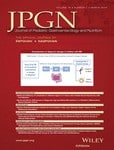
Tolerance development in cow’s milk-allergic children receiving amino acid-based formula with synbiotics: 36-Months follow-up of a randomized controlled trial (PRESTO Study) (2024)
Title : Tolerance development in cow’s milk-allergic children receiving amino acid-based formula with synbiotics: 36-Months follow-up of a randomized controlled trial (PRESTO Study)
Researcher : Pantipa Chatchatee, Anna Nowak-Wegrzyn, Lars Lange, Suwat Benjaponpitak, Kok W. Chong, Pasuree Sangsupawanich, Simone R. B. M. Eussen, Marleen T. J. van Ampting, Manon M. Oude Nijhuis, Jane E. Langford, Valerie Trendelenburg, Robert Pesek, Carla M. Davis, Antonella Muraro, Michel Erlewyn-Lajeunesse, Adam T. Fox, Louise J. Michaelis, Kirsten Beyer, PRESTO study team
Department : Faculty of Medicine, Siam University, Bangkok, Thailand
E-mail : med@siam.edu
Link to article : Journal of Pediatric Gastroenterology and Nutrition, 2024, 78(3), pp. 699–703. https://doi.org/10.1002/jpn3.12104
Citation : Chatchatee, P., Nowak-Wegrzyn, A., Lange, L., Benjaponpitak, S., Chong, K. W., Sangsupawanich, P., Eussen, S. R. B. M., Ampting, M. T. J., Oude Nijhuis, M. M., Langford, J. E., Trendelenburg, V., Pesek, R., Davis, C. M., Muraro, A., Erlewyn-Lajeunesse, M., Fox, A. T., Michaelis, L. J., & Beyer, K. (2024). Tolerance development in cow’s milk-allergic children receiving amino acid-based formula with synbiotics: 36-Months follow-up of a randomized controlled trial (PRESTO Study). Journal of Pediatric Gastroenterology and Nutrition, 78(3), 699–703. https://doi.org/10.1002/jpn3.12104
Journal : Journal of Pediatric Gastroenterology and Nutrition / in Scopus
ฐานข้อมูลงานวิจัย มหาวิทยาลัยสยาม : –

Tourists’ and tourism suppliers’ perceptions toward crisis management on tsunami (2013)
Title : Tourists’ and tourism suppliers’ perceptions toward crisis management on tsunami
Researcher : Bongkosh N. Rittichainuwat
Department : International Program in Hotel & Tourism Management, Siam University, 235 Petkasem Rd., Phasichareon, Bangkok 10160, Thailand
E-mail : Bongkosh N. Rittichainuwat ngamson@gmail.com
Abstract : This study describes tourists’ perceptions toward the importance of safety measures across tourists who stay at different types of accommodation; compares the pre and post analysis of such safety measures during normal time and six months after the disaster and identify safety measures that contribute the most to the sense of beach safety. This study uses a survey, interviews, and observation. The target population was inbound tourists traveling to Thai beaches. It was found that respondents who participated in the survey six months after the March 2011 Japanese tsunami placed more importance on almost all tsunami safety measures than those who did the survey six years after the Indian Ocean tsunami. Guests at guest houses, placed the highest importance on all safety measures, whereas guests at upscale hotels, placed the lowest importance. Moreover, perceptions of beach safety were dependent on the availability of a tsunami evacuation system and a crisis management plan.
Publication : Tourism Management Vol.34 February 2013
Link to Publication: https://www.sciencedirect.com/journal/tourism-management/vol/34/suppl/C
Bibliography : Rittichainuwat, B. N. (2013). Tourists’ and tourism suppliers’ perceptions toward crisis management on tsunami. Tourism Management, 34, 112-121. https://doi.org/10.1016/j.tourman.2012.03.018
Author details in Scopus: Rittichainuwat, Bongkosh Ngamsom
Scopus Citations: https://www.scopus.com/sources.uri?DGCID=Scopus_blog_post_check2015
Google Scholar Citations: https://scholar.google.com/citations?user=ifUlKJoAAAAJ&hl=en

Tourists’ Motivations to Travel during Financial Crisis (2014)
Title : Tourists’ Motivations to Travel during Financial Crisis
Researcher : Bongkosh N. Rittichainuwat, Goutam Chakraborty & Suphaporn Rattanaphinanchai
Department : Service Industry Management, Siam University, Bangkok, Thailand
E-mail : Bongkosh N. Rittichainuwat ngamson@gmail.com
Abstract : This study aims to describe the motivations of tourists to travel during financial crises and to identify the impact of those travel motivations on the likelihood that tourists would travel during financial crises. The findings suggest short-distance destinations, novelty, and culture would motivate tourists during financial crises; but tourist recreation would deter them from traveling domestically. This study enriches the literature on the travel motivations of domestic tourists, particularly Thai tourists, to travel during financial crises.
Publication : Journal of Quality Assurance in Hospitality & Tourism Vol.15 No.1 January-March 2014
Link to Publication: https://www.tandfonline.com/toc/wqah20/15/1?nav=tocList
Bibliography : Rittichainuwat, B. N., Chakraborty, G. & Rattanaphinanchai S.(2014). Tourists’ motivations to travel during financial crisis. Journal of Quality Assurance in Hospitality & Tourism, 15(1), 100-113. DOI: 10.1080/1528008X.2014.855541
Author details in Scopus: Rittichainuwat, Bongkosh Ngamsom
Scopus Citations: https://www.scopus.com/sources.uri?DGCID=Scopus_blog_post_check2015
Google Scholar Citations: https://scholar.google.com/citations?user=ifUlKJoAAAAJ&hl=en

Tourists’ Perceived Risks Toward Overt Safety Measures (2013)
Title : Tourists’ Perceived Risks Toward Overt Safety Measures
Researcher : Bongkosh N Rittichainuwat
Department : Service Industry Management, Siam University, Bangkok, Thailand
E-mail : Bongkosh N. Rittichainuwat ngamson@gmail.com
Abstract : This study aims to assess tourists’ perceptions toward overt safety measures. The study segments tourists into four different groups depending on their perceptions toward overt safety measures, type of accommodation, and purpose of visit. A total of 476 respondents were segmented into special occasion tourists, leisure mid-priced tourists, frequent business travelers, and backpackers. A two-step cluster analysis and ANOVA were used to analyze the data. The results show that, all clusters, except the backpacker segment, feel quite safe toward overt safety measures. Whereas the special occasion tourists at luxury hotels felt the safest toward overt safety measures, they concurrently were the most likely discouraged with too-stringent overt safety measures. Although most tourists feel safe about overt safety measures, a stringent increase in safety measures could frighten them because such measures could create a false perception that something untoward has previously happened at the destination. Hence, the old claim that stringent safety measures frighten tourists remains a classic rule of thumb. Therefore, hoteliers must find an appropriate balance in the extent of overt safety measures so as not to exceed the acceptable safety threshold of tourists.
Publication : Journal of Hospitality and Tourism Research Vol.37 No.2 May 2013
Link to Publication: https://journals.sagepub.com/toc/jhtd/37/2
Bibliography : Rittichainuwat, B. N. (2013). Tourists’ perceived risks toward overt safety measures. Journal of Hospitality & Tourism Research, 37(2), 199–216. https://doi.org/10.1177/1096348011425494
Author details in Scopus: Rittichainuwat, Bongkosh Ngamsom
Scopus Citations: https://www.scopus.com/sources.uri?DGCID=Scopus_blog_post_check2015
Google Scholar Citations: https://scholar.google.com/citations?user=ifUlKJoAAAAJ&hl=en
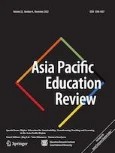
Transforming learning for sufficiency economy philosophy and sustainable development through the triangle of living learning lab (2022)
Title : Transforming learning for sufficiency economy philosophy and sustainable development through the triangle of living learning lab
Researcher : Rukspollmuang, C.
Department : Siam University, Bangkok, Thailand
Link to article: Asia Pacific Education Review, 2022, 23(4), pp. 595–610. https://doi.org/10.1007/s12564-022-09804-2
Journal : Asia Pacific Education Review / in Scopus
Bibliography : Rukspollmuang, C. (2022). Transforming learning for sufficiency economy philosophy and sustainable development through the triangle of living learning lab. Asia Pacific Education Review, 23(4), 595–610. https://doi.org/10.1007/s12564-022-09804-2
ฐานข้อมูลงานวิจัย มหาวิทยาลัยสยาม : –
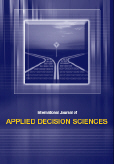
Treatment process conformance checking of patients (with sepsis and septic shock) in compliance with SSC and WMA using fuzzy miner algorithm in Fluxicon Disco (2023)
Title : Treatment process conformance checking of patients (with sepsis and septic shock) in compliance with SSC and WMA using fuzzy miner algorithm in Fluxicon Disco
Researcher : Porouhan, P.
Department : Graduate School of Information Technology, Siam University, Bangkok, Thailand
E-mail :
Link to article: International Journal of Applied Decision Sciences, 2023, 16(4), pp. 385–421 https://doi.org/10.1504/IJADS.2023.131830
Publication: International Journal of Applied Decision Sciences / in Scopus
Bibliography : Porouhan, P. (2023). Treatment process conformance checking of patients (with sepsis and septic shock) in compliance with SSC and WMA using fuzzy miner algorithm in Fluxicon Disco. International Journal of Applied Decision Sciences, 16(4), 385–421. https://doi.org/10.1504/IJADS.2023.131830
ฐานข้อมูลงานวิจัย มหาวิทยาลัยสยาม : –
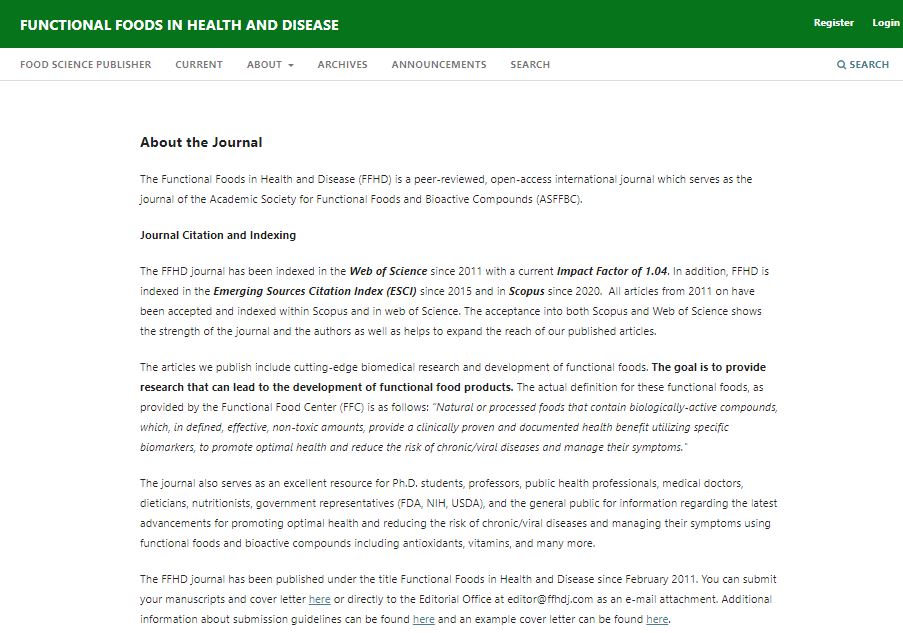
Tuna blood inhibits lipopolysaccharide-induced inflammatory mediators in RAW264.7 macrophages (2021)
Title : Tuna blood inhibits lipopolysaccharide-induced inflammatory mediators in RAW264.7 macrophages
Researcher : Wanwimol Klaypradit, Mantira Hawangjoo, Nujamee Ngasakul, Pennapa Chonpathompikunlert, Maruj Limpawattana, Wanida Sukketsiri
Department : สำนักอธิการบดี มหาวิทยาลัยสยาม
E-mail : maruj.lim@siam.edu
ฐานข้อมูลงานวิจัย มหาวิทยาลัยสยาม : –
Link to article: Functional Foods in Health and Disease, 2021, 11(4), 201-212. https://doi.org/10.31989/ffhd.v11i4.785
Journal : Functional Foods in Health and Disease / in Scopus
Bibliography : Klaypradit, W.,Hawangjoo, M., Ngasakul, N., Chonpathompikunlert, P., Limpawattana, M., & Sukketsiri, W. (2021). Tuna blood inhibits lipopolysaccharide-induced inflammatory mediators in RAW264.7 macrophages. Functional Foods in Health and Disease, 11(4), 201-212. https://doi.org/10.31989/ffhd.v11i4.785

Tunable Gm-C Floating Capacitance Multiplier (2018)
Title : Tunable Gm-C Floating Capacitance Multiplier
Researcher : Wipavan Narksarp*, Yongyuth Naras*, and Vinai Silaruam
Department : *Department of Electrical Engineering, Faculty of Engineering, Siam University
E-mail : wipavan.nar@siam.edu,yongyuth.nar@siam.edu
Bibliography : Narksarp, W., Naras, Y., & Silaruam, V. (2018). Tunable Gm-C Floating Capacitance Multiplier. In ECTI-CON 15th International Conference on Electrical Engineering/Electronics, Computer, Telecommunications and Information Technology (pp. 413-416). Chiang rai: Rajanangala University of Technology Lanna.
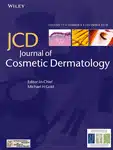
Ultrasound evaluation of arterial anastomosis of the forehead (2018)
Title : Ultrasound evaluation of arterial anastomosis of the forehead
Researcher : Tansatit, T., Phumyoo, T., Jitaree, B., Sawatwong, W., Rungsawang, C., Sahraoui, Y.M.E.,… Lee, J.H.
Abstract : Background: Color Doppler ultrasound has a potential role as an imaging guide in aiding filler injections which are blinded procedures.
Objective: This study investigated the forehead arteries and provided insight into their anastomoses. This was performed by challenging their function to provide blood through these anastomoses when the main artery was temporary occluded by compression.
Methods: Three arteries were identified on each side of the forehead, the supratrochlear, the supraorbital and the superficial temporal arteries. Under ultrasound monitoring, each target artery and corresponding anastomosis was studied separately by compressions performed in a sequential and accumulative manner.
Results: Data from the current study imply that accidental cannulation of either the supratrochlear artery or the supraorbital artery can cause ophthalmic artery embolization in every case recorded. If the frontal branch of the superficial temporal artery is cannulated, the chance of blindness as a complication occurs in one fifth of volunteers. Anastomosis between both sides of the terminal branches of ophthalmic arteries creates the possibility of bilateral ocular complications when accidental cannulation occurs at one of these branches, especially the supratrochlear artery. Thus, injury to the supratrochlear artery carries a greater risk of complication than the supraorbital artery.
Conclusion: These findings emphasize that the chance of ocular complication is less when accidental cannulation occurs at the superficial temporal artery compared with injury to the supratrochlear or the supraorbital arteries as the terminal branches of the ophthalmic artery. Ultrasound can assist in the identification and evaluation of all the arteries at risk, thus avoiding the occurrence of vascular complications.
Link to Academic article: https://doi.org/10.1111/jocd.12755
Journal : Journal of Cosmetic Dermatology, 2018, 17(6).
Bibliography : Tansatit, T., Phumyoo, T., Jitaree, B., Sawatwong, W., Rungsawang, C., Jiirasutat, N.,…Lee, J. H. (2018). Ultrasound evaluation of arterial anastomosis of the forehead. Journal of Cosmetic Dermatology, 17(6), 1031–1036.
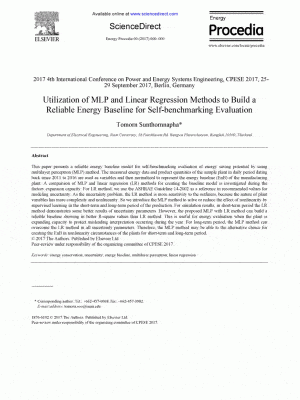
Utilization of MLP and Linear Regression Methods to Build a Reliable Energy Baseline for Self-benchmarking Evaluation (2017)
Title : Utilization of MLP and Linear Regression Methods to Build a Reliable Energy Baseline for Self-benchmarking Evaluation
Researcher : Tomorn Sunthornnapha
Department : Department of Electrical Engineering, Siam University
E-mail : tomo.soo@siam.edu
Abstract : This paper presents a reliable energy baseline model for self-benchmarking evaluation of energy saving potential by using multilayer perceptron (MLP) method. The measured energy data and product quantities of the sample plant in daily period dating back since 2011 to 2016 are used as variables and then normalized to represent the energy baseline (EnB) of the manufacturing plant. A comparison of MLP and linear regression (LR) methods for creating the baseline model is investigated during the factory expansion capacity. For LR method, we use the ASHRAE Guideline 14-2002 as a reference in recommended values for modeling uncertainty. As the uncertainty problem, the LR method is more sensitivity to the outliners, because the nature of plant variables has more complexity and nonlinearity. So we introduce the MLP method to solve or reduce the effect of nonlinearity by supervised learning in the short-term and long-term period of the production. For simulation results, in short-term period the LR method demonstrates some better results of uncertainty parameters. However, the proposed MLP with LR method can build a
reliable baseline showing in better R-square values than LR method. This is useful for energy evaluation when the plant is expanding capacity to protect misleading interpretation occurring during the year. For long-term period, the MLP method can overcome the LR method in all uncertainty parameters. Therefore, the MLP method may be able to the alternative choice for creating the EnB in nonlinearity circumstances of the plants for short-term and long-term period.
Keywords : energy conservation; uncertainty; energy baseline; multilayer perceptron; linear regression
Download PDF: Utilization of MLP and Linear Regression Methods to Build a Reliable Energy Baseline for Self-benchmarking Evaluation
Link to Conference: 2017 4th International Conference on Power and Energy Systems Engineering, CPESE 2017, 25-29 September 2017, Berlin, Germany
Bibliography : Sunthornnapha, T. (2017). Utilization of MLP and Linear Regression Methods to Build a Reliable Energy Baseline for Self-benchmarking Evaluation. In 2017 4th International Conference on Power and Energy Systems Engineering, CPESE 2017, 25-29 September 2017. Berlin: Germany.